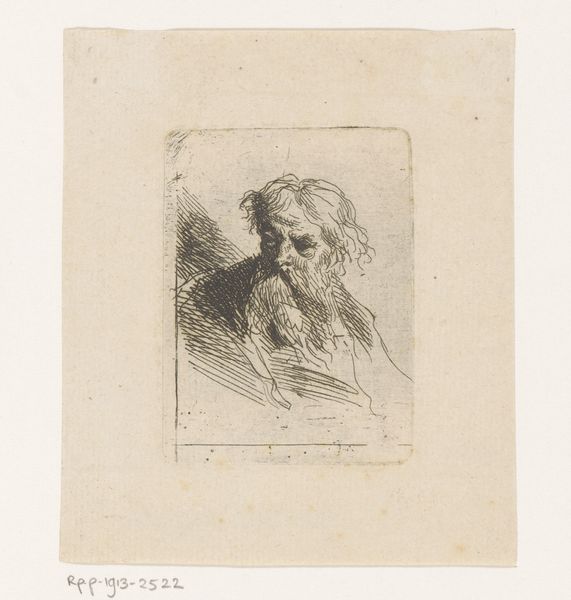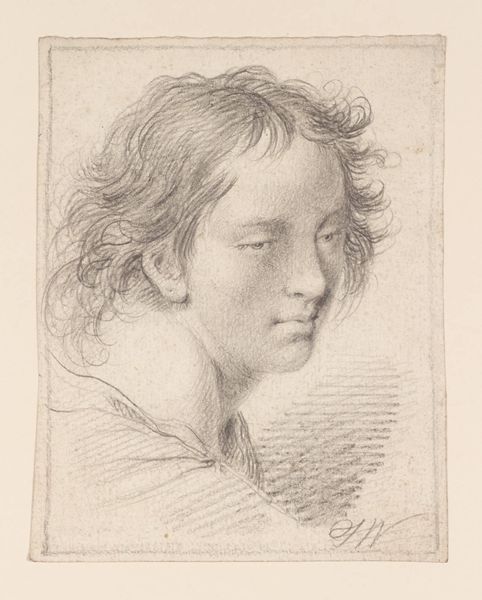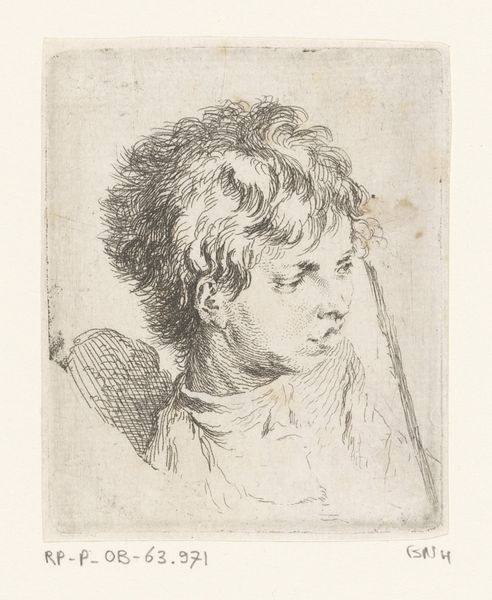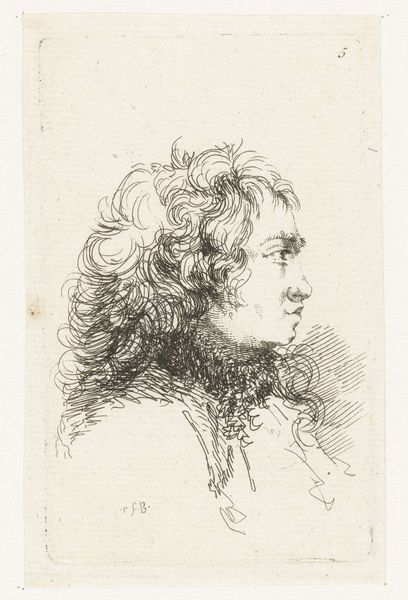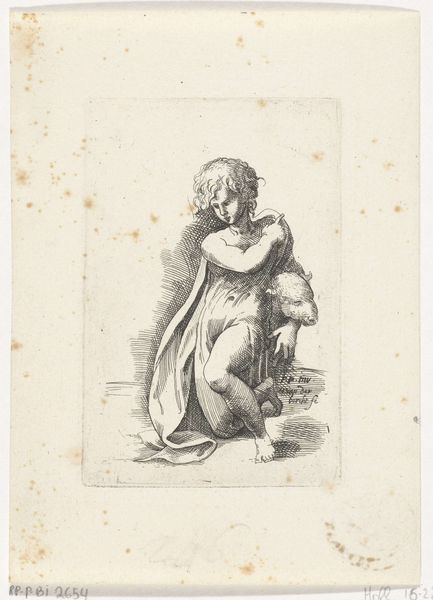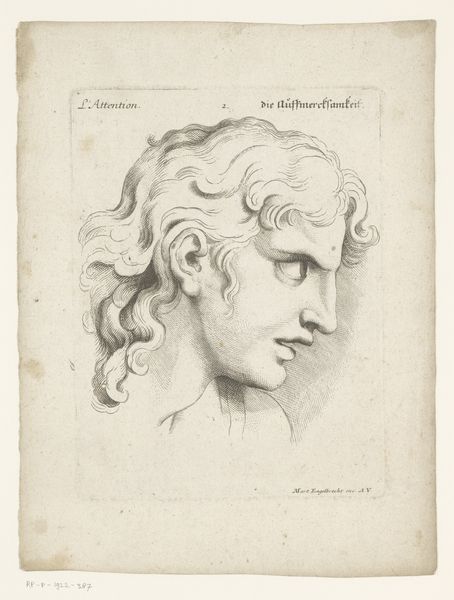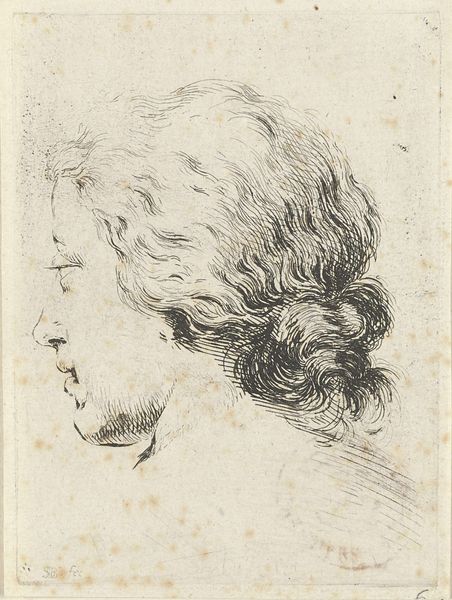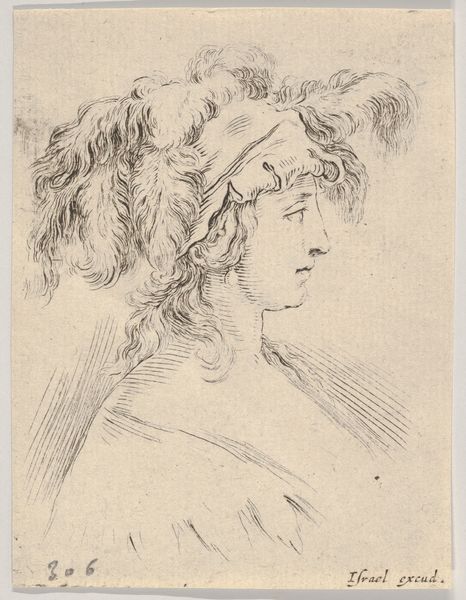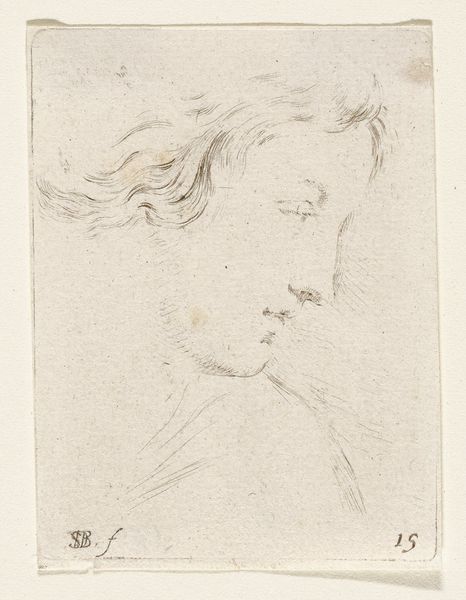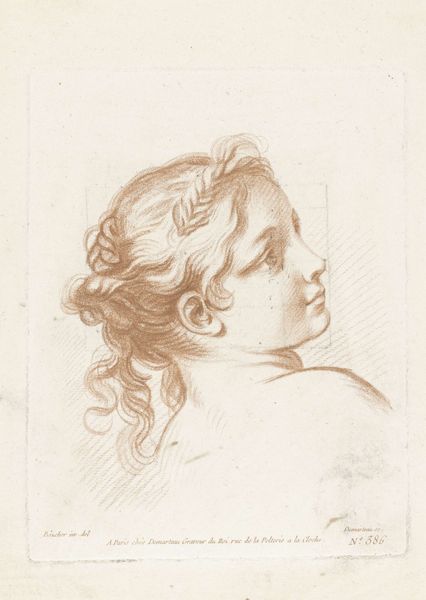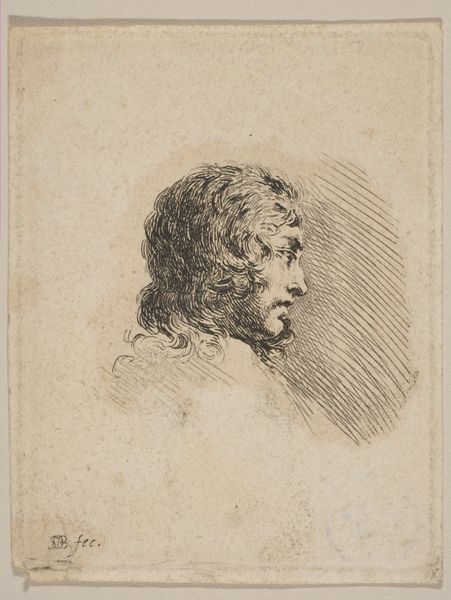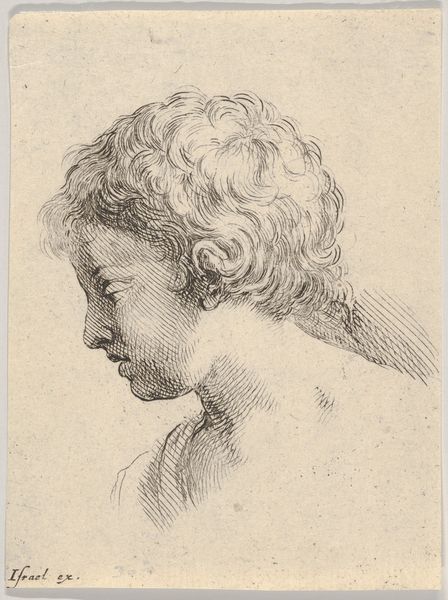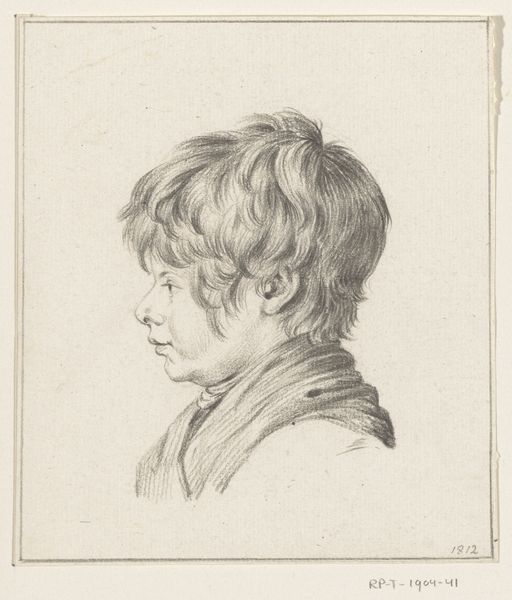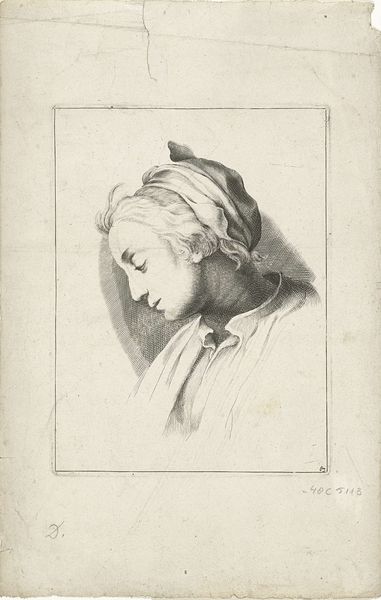
drawing, engraving
#
portrait
#
drawing
#
baroque
#
old engraving style
#
caricature
#
line
#
portrait drawing
#
engraving
Dimensions: height 212 mm, width 172 mm
Copyright: Rijks Museum: Open Domain
Frederick Bloemaert made this print, Head of a Child, in the Netherlands in the 17th Century. Bloemaert was a member of a famous family of painters and printmakers in Utrecht. Prints like this one allowed artists to circulate images widely, and this was a time when artists were attempting to elevate their social standing. The widespread distribution of prints aided that ambition. Here, the boy’s gaze is cast downward, as if in contemplation. Bloemaert has given him long, flowing locks that are carefully curled. This fashion consciousness raises questions about social class. Is Bloemaert commenting on the vanity of the wealthy, or is he simply offering this as a model for other artists to emulate? To fully understand the context of Bloemaert’s image, we can investigate family archives, guild records, and collectors’ inventories. It's through this kind of historical research that we can appreciate how artworks gain their meaning through social context and institutional forces.
Comments
No comments
Be the first to comment and join the conversation on the ultimate creative platform.
